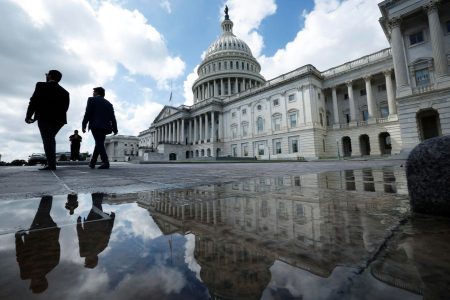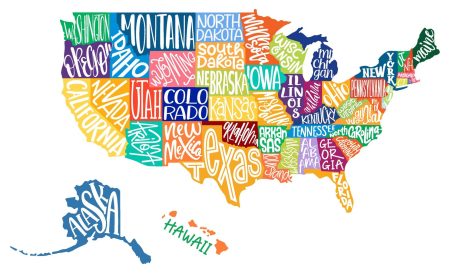Ted Peterson of the University of North Texas Ryan College of Business discusses the SALT deduction cap and its potential paths forward as the 2025 sunset date approaches.
This transcript has been edited for length and clarity.
David D. Stewart: Welcome to the podcast. I’m David Stewart, editor in chief of Tax Notes Today International. This week: a dash of SALT.
When the Tax Cuts and Jobs Act was enacted in 2017, it included a number of temporary provisions aimed at keeping the total cost of the legislation under control. But as we head into 2025, we are fast approaching the end of that temporary period. One measure with wide reach for individual taxpayers is the $10,000 limitation on the state and local tax deduction.
So where do the parties stand on the limit? And what could be done to improve the policy?
Here to talk more about this is Ted Peterson, a clinical assistant professor at the Ryan College of Business at the University of North Texas. Ted, welcome to the podcast.
Ted Peterson: Thank you so much. Good to be with you.
David D. Stewart: So why don’t we start off from first principles, the history of the state and local tax deduction?
Ted Peterson: Yeah. No, that’s a great question. The SALT deduction, or state and local tax deduction, has really been a feature of the tax code since, really, its inception in 1913. So coincidentally, the same year that we had the introduction for the U.S. federal income tax, the state and local tax provision was included there. So as the name implies, the SALT deduction allows itemizing taxpayers to deduct property, sales, or income taxes they have already paid to state and local governments when electing the SALT deduction. So taxpayers who itemize federal tax deductions can subtract property taxes, but they must choose, in this case, between deducting income taxes and sales taxes.
David D. Stewart: So what is the rationale behind allowing these taxes to be deducted?
Ted Peterson: Yeah, the rationale with that would be, these taxes are obligations, and these taxes, we really can’t get out of. From that perspective, we have to pay the state and local taxes, and as a result of that, the federal side of the equation gives us a little bit of a benefit of deducting those respective taxes.
David D. Stewart: All right. Now turning to what happened with the Tax Cuts and Jobs Act, we now have this SALT cap. Could you tell us about that?
Ted Peterson: Yeah. So in December 2017, congressional Republicans and President Trump passed this Tax Cuts and Jobs Act. So while this act lowered our personal income tax levels, it increased the standard deduction used by most of our taxpayers. It placed a limit on the SALT deduction to $10,000. So some of the things that took place as a result of this is, as a result of the tax law, the share of return filers claiming a SALT deduction dropped to about 9 percent in 2020. So that being said, as we look at this level of itemization that some taxpayers take advantage of, it’s highly stratified in the United States across our high-income earners, with 64 percent of those earning in excess of about $500,000 would be itemizing their taxes.
David D. Stewart: What sort of impact has capping this deduction had?
Ted Peterson: So a lot of what took place here, we can kind of think about it as the saying, is where you sit is where you stand. So the SALT cap reduced tax rates for many of our high-income taxpayers in high-tax states, and for some taxpayers, by having the SALT cap in place, it also led to tax increases. So thinking about this in terms of where we are in the United States, so if we look back to 2016, about 30 percent of taxpayers claimed the SALT deduction. The average amount for that was about $12,500. Those states with the highest percentage of taxpayers using the SALT deduction included Maryland, New Jersey, Connecticut, and New York state being the highest with about $22,000. That being said, the impact of this was felt much more dramatically on higher-tax locations compared to lower-tax states.
David D. Stewart: And what have critics said about this cap?
Ted Peterson: Yeah, that’s a great question there. So not surprisingly, with no Democrat voting for the legislation, criticism is typically found upon the party lines. So broadly, as we look at this, the Trump tax law, some argue it was too skewed towards the wealthy, and ultimately failed to deliver on its promises. Others contend that as we look at the tax cuts for corporations, lowering those rates from 35 to 21 percent, the benefit was largely felt for corporations. So looking specifically at the SALT cap, critics would charge that it is largely punitive towards blue states, which often hold higher tax burdens. In that sense, taxpayers who are most likely to be affected by the cap often live in blue or Democrat-leaning states, while those less affected tend to reside in red or Republican-leaning states.
So this contrast kind of creates a complex dynamic in the debate, if we look at, over the future of the SALT deduction, kind of challenging conventional party-line positions. The prominent National Governors Association stated, as I mentioned earlier, that these types of taxes — meaning state, local, real estate, and sales — are mandatory obligations. In that sense, we really can’t get around those taxes. It’s also arguably been around since the inception of the federal tax code, and so it’s not really something that should have been done away with or capped in the first place.
David D. Stewart: So what is the rationale for doing away with, or at least capping this deduction?
Ted Peterson: Yeah, and so kind of thinking about this in terms of those who would support this type of cap, would be that those who are primarily benefiting are wealthy homeowners in high-tax states like New York or California. So kind of thinking about this, if you lived in one of the nine states, including Florida, Texas, Wyoming, that do not have a state income tax, you may not get the full benefit of the deduction.
So in that sense, these taxpayers are in a sense subsidizing those who are in higher-tax states who get the benefit, like New York or California. Furthermore, as we kind of consider this, proponents contend that the SALT cap places a heavier burden on those states, and would discourage state and local governments from levying higher taxes. The argument in this case is that if you do not allow for a deduction for higher taxes, maybe those states will reconsider having as high of taxes.
David D. Stewart: All right. So that brings us to today, and the sort of major question that’s looming out there. This was one of the expiring provisions of the Tax Cuts and Jobs Act, and it’s only in place through 2025. At the same time, we have a major election coming up. So where do people stand on what to do next?
Ted Peterson: That’s a great question. We all wish we had the crystal ball for November. That being said, both parties seem to have ideas in terms of what should take place with respect to this provision. Notably, the [Urban-Brookings] Tax Policy Center identified that if this were to lapse, meaning the Tax Cuts and Jobs Act, a majority of taxpayers would see an increase. And if we look at that by the quintiles of taxpayers, those between the 40th and 60th percentile, 70 percent of those would pay more compared to those in the top one-tenth of 1 percent in our country. There’s certainly enthusiasm to do something. The thought about who controls Congress and the presidency are kind of where things would go.
So there have been a few attempts in the past if we kind of break this down and think about SALT cap. Earlier in 2021, moderate Democrats pushed President Biden in lifting the cap as part of his spending plan. That did not gain sufficient traction. Earlier this year, a coalition of representatives from high-tax states sought to repeal or modify the SALT cap. That also did not gain sufficient traction.
Perhaps as we think about this, what’s more straightforward as we consider the election is, if there were a Republican sweep controlling the presidency and Congress, there’s been discussion already about extending the Trump tax law. So depending on kind of which model you use, and assumptions you use, you could put the price tag for this anywhere from $3 trillion to $5 trillion over 10 years that this would be in place.
The discussion there is still kind of unclear about what Republicans would do with the SALT cap, relative to lifting it entirely, or modifying the existing cap as is in place right now. A second term for President Biden presents some potentially more uncertainties on the tax code. President Biden has indicated an intent to let the Trump tax code expire. So if the tax cuts just expire, then the SALT cap would be lifted. In this sense, it would be gone.
President Biden has advocated for kind of a more equitable tax system, which increases taxes on corporations and high-income individuals. That being said, remains to be seen if the SALT would be part of that, or if it would not. That being said, in a sense, higher tax rates, proposed and argued for by President Biden, could be offset for higher-income earners by having the SALT cap lifted in its entirety.
So as we look at this, the potential impact remains uncertain, but there’s certainly a discussion as we think about this, in terms of this is a tax policy compared to other national spending priorities and so forth.
David D. Stewart: All right. So into this environment of uncertainty, are there alternatives to the ideas that are currently floating out there of how to deal with this?
Ted Peterson: Yeah, I mean as part of that, I mean obviously there’s the proposal of, A, you lift the cap in its entirety. And in that case, it would be back to what was the tax policy before the Tax Cuts and Jobs Act was put in place. Other proposals have been, “Yes, put that back in place, but cap it at different levels, based off of income for the respective individuals.” Some have said that “well, the cost of this is, with respect to how we are as a country, is just too prohibitive to continue at higher levels, and so a cap should remain in place at some level.”
David D. Stewart: Do you have any preferred method that you’d like to see considered?
Ted Peterson: Yeah. I mean, the way I kind of articulate it in my Tax Notes paper is kind of the way I would envision an appropriate strategy going forward. As we’re talking today in July 2024, we have national debts creeping in on $35 trillion, notwithstanding other obligations we have as a country. That being said, it’s probably too rich, in a sense, to lift it entirely, from the perspective that the benefits are really skewed to those who are highest-income earners.
Just kind of thinking about this, one statistic would be that the Peterson Foundation reported right the year before it was enacted, the cap, about 71 percent of the deduction was going to those who were earning $200,000 or more. That being said, the cost of this in terms of the cap prior to lifting it is not really that much relative to the overall size of the federal government there. In 2017, the year before it was put into place, the federal government received revenue from about $1.6 trillion from individual income taxes. And if we look at just the amount or cost of the SALT deduction, it was about $69 billion, and so this is less than 5 percent of total tax receipts. So it’s not a dramatic amount if you think about it there.
Others have proposed kind of looking at the cap, as now it’s encroaching on more and more middle-income homeowners. So what I look at here is thinking about this from the perspective of a balanced approach of, A, what was proposed earlier this year would be to double the cap to $20,000 for married filers, and the cost of this would be about $12 billion as of 2024, as compared to lifting it entirely, which, if you just look at the cap itself, I mean, the cost in 2024, according to the Penn Wharton Budget Model, which was released in February of this year, if I’m not mistaken, it would be about $197 billion, or about $1.1 trillion over 10 years.
And so looking at it like a $20,000 cap, if we look at a $12 billion cost associated with that, this would be about 0.5 percent for the federal income tax receipts, which seems to be a reasonable amount in terms of not necessarily benefiting just those at the top, but also benefiting those more in the middle for our country.
That being said, one other facet I would look at that I think is part of this discussion is taking this as a pragmatic approach, and kind of looking at this from the perspective of $20,000 would be fairly minimal cost in terms of tax revenue, but arguably, this should be one of those things, like our federal income tax rates, that would be indexed to inflation.
And so [there are] different inflationary measures we could look at to come up with this. Certainly, as we look at the consumer price index from the year 2017 to 2024, we’ve seen roughly a 30 percent increase just looking at that number alone, and suggesting that just leaving the SALT cap at the $10,000 would continue to impact more and more middle-income Americans.
Other things as part of this, as you look at similar tax policies that are adjusted for inflation, the 401(k) contribution limits people pay into, health savings accounts, are also indexed to inflation. And in that regard, the argument we would make is that the SALT cap should be adjusted accordingly.
David D. Stewart: Well, it’s going to be exciting times as we try to find out what’s next for the Tax Cuts and Jobs Act, but Ted, thank you so much for being here.
Ted Peterson: Thank you so much. Appreciate your time.
Read the full article here










